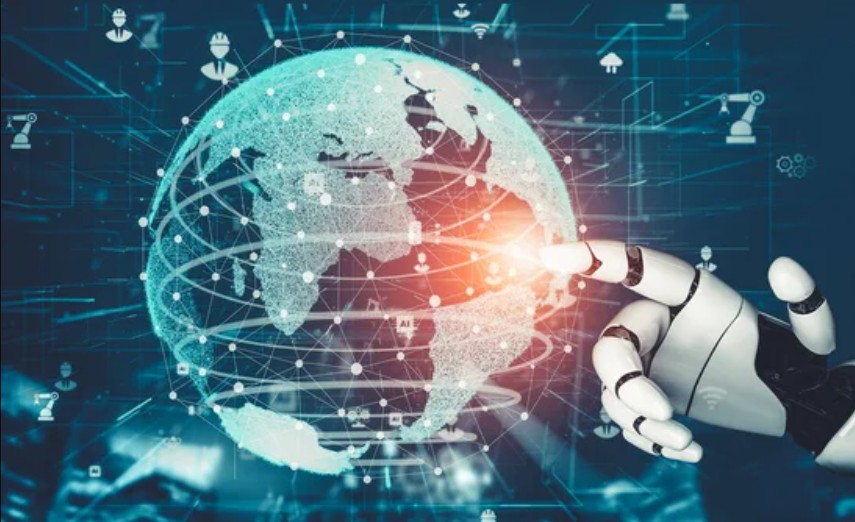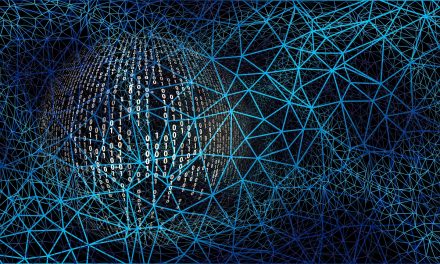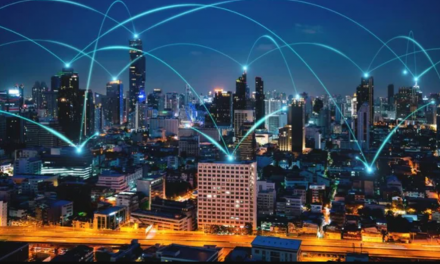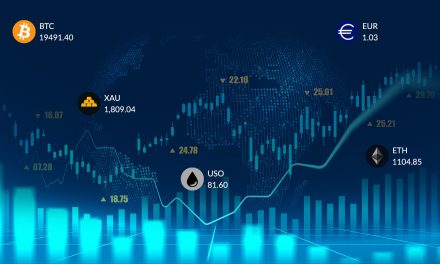On a crisp morning in Zurich, a consortium of engineers from Google DeepMind and Ethereum’s core development team unveiled a prototype that could redefine the backbone of modern finance: a self-adapting smart contract powered by artificial intelligence. This isn’t merely an incremental upgrade to existing blockchain frameworks. It’s a seismic shift—one that merges the predictive prowess of machine learning with the immutable trust of decentralized ledgers. The implications? Financial agreements that evolve in real-time, decentralized autonomous organizations (DAOs) capable of strategic decision-making, and a new era where code doesn’t just execute rules but understands them.
“This isn’t about replacing lawyers or bankers,” said Dr. Lena Kravets, DeepMind’s lead AI researcher on the project. “It’s about creating systems that anticipate market shifts, mitigate risks autonomously, and democratize access to financial tools.” The announcement, made at the intersection of two technological titans, signals a turning point for Web3—a fusion of technologies poised to disrupt industries far beyond fintech.
Technical Background: Bridging Two Revolutions
To grasp the significance of this collaboration, one must first untangle the threads of two parallel revolutions: blockchain’s promise of decentralization and AI’s capacity for adaptive intelligence. Smart contracts—self-executing agreements coded on blockchains like Ethereum—have long been hailed for eliminating intermediaries. Yet their rigidity remains a bottleneck. Traditional smart contracts follow static “if-then” logic, incapable of adjusting to unforeseen variables like market crashes or regulatory changes.
Enter reinforcement learning (RL), the same AI technique that enabled DeepMind’s AlphaGo to master the world’s most complex board game. By integrating RL models into blockchain architectures, these contracts can now learn from real-world data. Imagine a decentralized insurance protocol that dynamically adjusts premiums based on emerging climate patterns or a supply chain contract that reroutes shipments autonomously during geopolitical disruptions.
“It’s like giving blockchain a nervous system,” explained Vitalik Buterin, Ethereum’s co-founder, during an exclusive interview. “The blockchain remains the skeleton—secure and transparent—but the AI layer adds reflexes, intuition, and adaptability.”
AI Meets Blockchain: The Birth of a Hybrid Protocol
The road to this breakthrough was anything but linear. Internal documents reveal that early experiments in 2022 faltered under the weight of incompatible architectures. Blockchain’s deterministic nature—where every outcome must be predictable and verifiable—clashed with AI’s probabilistic decision-making. “We faced a paradox,” admitted Markus Kuhn, a cryptographic engineer at the Ethereum Foundation. “How do you maintain consensus when the AI’s choices aren’t fully reproducible?”
The solution emerged from an unlikely analogy: quantum physics. Just as quantum systems use “entanglement” to synchronize particles across distances, the team developed a method to align AI’s stochastic processes with blockchain’s consensus mechanisms. Dubbed “Proof-of-Learning,” the protocol requires AI models to submit verifiable training trajectories—a cryptographic fingerprint of their decision-making process—ensuring every adaptive move remains auditable.
But technical hurdles were only half the battle. Regulatory skepticism loomed large. In 2023, the U.S. SEC temporarily halted an early trial of AI-driven derivatives contracts, citing concerns over “opaque decision-making.” The project survived only after implementing explainability frameworks that let regulators “trace” the AI’s logic through layers of neural networks.
Expert Insights: Voices from the Frontier
Demis Hassabis, CEO of Google DeepMind:
“When we first explored protein folding with AlphaFold, we proved AI could solve problems humans couldn’t. Now, we’re applying that same ethos to finance. The goal isn’t just efficiency—it’s resilience. An AI that predicts liquidity crises or detects fraudulent patterns could stabilize entire economies.”
Dr. Sheila Warren, CEO of the Crypto Council for Innovation:
“The marriage of AI and blockchain answers a critical question: How do we govern decentralized systems as they grow more complex? This isn’t about replacing human judgment. It’s about augmenting it with tools that operate at scales and speeds we can’t.”
Professor Hiro Tanaka, MIT Digital Currency Initiative:
“There’s a misconception that AI introduces centralization because it’s resource-intensive. But by embedding these models into decentralized networks, we’re distributing computational load across nodes. It’s a blueprint for sustainable, scalable AI.”
Ripples Across Industries
The immediate impact is most visible in decentralized finance (DeFi). Platforms like Uniswap and Aave are already experimenting with AI-enhanced liquidity pools that optimize returns based on predictive analytics. But the implications stretch further:
- Enterprise Adoption: Microsoft’s Azure Blockchain team is piloting AI-augmented supply chain contracts for Fortune 500 companies, reducing logistical delays by 40% in early tests.
- Crypto Markets: Tokens associated with AI-blockchain projects have surged 220% year-to-date, outpacing broader market trends.
- Consumer Finance: Neo-banks like Revolut are exploring AI-driven credit scoring models that run on decentralized networks, promising fairer loan terms for unbanked populations.
Yet barriers persist. A recent IMF report warns that AI’s “black box” nature could complicate audits, while energy consumption remains a thorny issue. Hybrid networks currently require 30% more computational power than traditional blockchains—a trade-off developers are racing to mitigate.
How It Works?
At its core, the protocol operates through a symbiotic loop:
- Data Ingestion: Oracles feed real-time data (market prices, weather patterns, social sentiment) into the AI layer.
- Reinforcement Learning: The AI model, trained on historical and synthetic data, simulates thousands of potential outcomes.
- Consensus Verification: Nodes validate the AI’s proposed actions using Proof-of-Learning, ensuring alignment with historical patterns.
- Execution: Approved actions trigger smart contract updates, recorded immutably on-chain.
For instance, consider a decentralized insurance DAO covering farmers against drought. Traditional contracts pay out based on fixed rainfall metrics. The AI-enhanced version, however, analyzes satellite imagery, soil moisture trends, and commodity futures to adjust payouts preemptively—potentially issuing funds before crops fail.
Ethical and Regulatory Examination
The fusion of these technologies ignites pressing questions:
- Bias Mitigation: How can decentralized networks ensure AI models don’t perpetuate biases present in training data?
- Regulatory Compliance: Will fragmented global regulations stifle innovation, or can interoperable standards emerge?
- Environmental Impact: Can proof-of-stake blockchains and energy-efficient AI training coexist sustainably?
The EU’s forthcoming AI Act, which classifies certain blockchain-AI systems as “high-risk,” mandates strict transparency requirements. Meanwhile, initiatives like the Decentralized AI Alliance are crafting open-source tools to audit AI models on-chain.
Future Implications: A World Redesigned
Looking ahead, three scenarios dominate projections:
- Decentralized Autonomous Corporations: Companies governed by AI-blockchart algorithms, balancing profit motives with societal impact metrics.
- AI-Driven Governance: Municipalities using hybrid systems to allocate resources, predict infrastructure needs, and engage citizens.
- Ethical Renaissance: As AI handles logistical complexity, humanity could shift focus toward creativity, ethics, and exploration—much like Hassabis’s vision of “radical abundance.”
Yet the greatest challenge remains philosophical: What becomes of human agency when machines negotiate, legislate, and innovate? As Dr. Kravets mused, “We’re not building tools. We’re building collaborators.”
Conclusion
As I left the Zurich conference center, the buzz of developers and investors fading behind me, I recalled a phrase from Hassabis’s Nobel acceptance speech: “The future belongs to those who see possibilities before they become obvious.” In the dance between AI and blockchain, we’re witnessing more than a technical milestone—we’re glimpsing a framework for a world where technology doesn’t just serve humanity but elevates it.
The road ahead is fraught with challenges, yes. But as the pixels of this new reality take shape, one truth emerges: The future of innovation lies not in choosing between decentralization and intelligence, but in weaving them into a tapestry neither could create alone.





